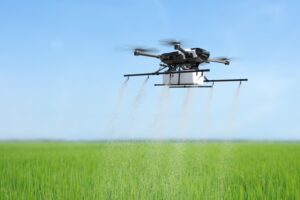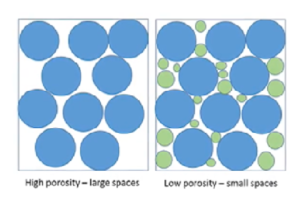Soil is a fundamental resource and a valuable source of information. Acquiring soil data, interpreting it with the help of precision agriculture companies in the USA, and then making fact-based decisions according to those valuable insights can help growers apply resources optimally without compromising yields. Before understanding how the soil data can benefit an operation, let’s take a minute look at different soil types:

Source: Freepik
Different Soil Types Explained:
Particle size is the most critical factor when classifying soil types, as it dictates the properties. Soils are, therefore, classified based on their particle size into three main categories:
- Sand – 0.05-2mm diameter
- Silt – 0.002-0.05mm diameter
- Clay – less than 0.002mm diameter
Sand:
Sand particles are necessarily small rock fragments, so it is no wonder it’s the soil type with the most oversized particle diameter. Sandy soils feel very gritty between the fingers, and the sand grains cannot stick together. It is typical that sandy soils retain little water due to bigger spaces between the particles.
However, the water that is retained is quickly released to plants. Whenever rain or irrigation occurs, water readily penetrates the soil layer, and the excess moves through swiftly and drains quickly.
Silt:
The soil particles classified as silt are intermediate in size and the chemical and physical properties between clay and sand. Silt tends to be spherical, giving high-silt soil a soapy or slippery feeling whenever rubbed between your fingers when wet. Because of this spherical shape, silt retains water efficiently, releasing the water readily to plants.
Silt is generally considered suitable for the growth of plants, mainly due to its water-holding capacity.
Clay:
Clay consists of the finest particles of all soil types. A small clay soil sample will feel sticky when wet and rubbed between the fingers. Clay is excellent in retaining water and many plant nutrients, like calcium, magnesium, potassium, trace elements, and phosphorus. A good mixture of soil without clay particles tends to be infertile. Although clay retains water well, it does not release it as readily as other soil types.
Clay particles have a higher tendency to stick together than sand; thus, it is common knowledge among farmers that soil high in clay is difficult to till.
In practice, most fields are a mixture of the above soil types. Since there can be a wide range of sand, silt, and clay percentages in soils, scientists have standardized a procedure for classifying the potential combinations into 12 groups to reflect the broad soil properties.
- Entisols: Little, if any horizon development
- Aridisols: Soils located in arid climates
- Alfisols: Deciduous forest soils
- Ultisols: Extensively weathered soils
- Gelisols: Soils containing permafrost
- Andisols: Soil formed in volcanic material
- Inceptisols: Beginning of horizon development
- Mollisols: Soft, grassland soils
- Spodosols: Acidic, coniferous forest soils
- Oxisols: Extremely weathered, tropical soils
- Histosols: Soils formed in organic material
- Vertisols: Shrinking and swelling clay soils
Loam:
Loamy soil is a type of soil that has coarse sand, tiny silt particles, and clay in equal amounts. For example, loam soil is the best-suited type for growing most of the plants due to its propensity to hold enough water and nutrients yet release them relatively quickly as opposed to clay-dominant soils, which, although very rich in nutrients, have very poor drainage due to the lesser pore size and are not beneficial for roots to grow in due to its hard-packed texture. Sandy soils do not retain water well, and silt needs to have nutrients well. By offering a blend of these particles, loam accentuates the advantages and balances out the detriments of every single particle size, forming a fertile medium that is the ideal soil type for many plant types.
Water Holding Capacity of Soil: An Overview
As mentioned earlier, the size of the soil particles and the spaces between them determine a soil’s water-holding capacity. The image below shows the spaces between particles—and they are called “pores.” Macropores can store water, and plants quickly access it but cannot hold it very well. With micropores, it’s the exact opposite.

Source: Freepik
Taking a step backwards and looking at what is happening on the soil’s surface, we’ll see that it creates a pressure difference when a plant loses water through the leaves called transpiration. This pressure difference leads to a suction tension, allowing roots to draw the water from the pores in the soil to restore balance. Roots extract water more efficiently from macro pores, requiring less suction tension.
Precision Agriculture in the USA helps growers manage watering regimes more accurately. Such accurate readings from soil moisture probes help determine when to irrigate and give a clearer picture of how much to irrigate.
In Summary:
Precision agriculture consists of performing the proper operation in the right place, at the right time, and in the right amount. To achieve this, you must start by collecting accurate data and translate those into valuable insights to base your decisions so that, you can take the best course of action.
There are many Precision agriculture companies in the USA and globally that specialize in accurately measuring soil properties and helping to classify characteristics within the soil. To learn how you can utilize high resolution soil mapping to characterize your field’s soil and determine the best management plans, visit us online at https://soiloptix.com/ now!
